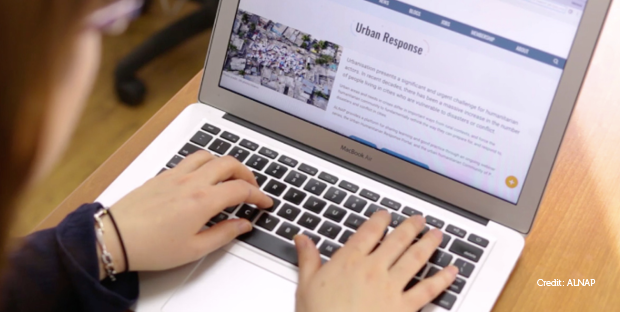Humanitarian and development practitioners generally accept that programs, policies, and processes need to be “context-specific” to reach their goals. With more and more crises impacting urban contexts, this conundrum is taking on a distinctly urban flavour. But what does context actually mean, and which tools are best suited to help us make our action ‘context-specific’? The much-anticipated report “What’s missing? Adding context to the urban response toolbox” sets out to answer these questions.
It is the result of a two-year research and consultation process with a wide array of practitioners and organisations, including an initial learning event that we attended in 2017 to share our knowledge on tools. As JIPS we engaged throughout the process by contributing our expertise working on profiling urban displacement situations. The launch event organised by the Active Learning Network for Accountability and Performance in Humanitarian Action (ALNAP) in March in Beirut was a great opportunity to discuss the report and remaining questions.

The ALNAP report defines context as “the environment and circumstances within which something happens and which can help explain it”. This refers to occurrences that are wider in scope than the singular event leading to a humanitarian crisis: it includes the interconnected web of events that happened before the crisis, as well as the events that are likely to happen after.
Understanding the “bigger picture” helps to explain why disastrous events can have the effect they have. As Leah Campbell (ALNAP) says, “context gives meaning to what has happened and helps explain its significance“. If we ignore the context and focus solely on the immediate impact of a disaster, conflict or human rights violations (as humanitarian action has been trained to do for decades), we fail to consider the elements that mitigate or amplify this impact, and are therefore less able to complement or prevent those outcomes.
To us at JIPS, we strive to make sure profiling analysis is relevant for decision-makers, practitioners and affected communities by working with partners to ensure methods used are adapted for context realities. This report therefore fills a major gap by tackling the fundamental question on how to understand a context well enough in order to make a data collection process “context-specific”. It demonstrates that relevant processes and programs require a clear understanding of the dynamics of a city, and that obtaining this understanding is in fact feasible.
Understanding the wider context is particularly relevant in urban displacement settings. As emphasised by the recently published Durable Solutions Analysis Guide, it is important to look at whether the context creates additional challenges for displaced populations compared with non-displaced communities living in that same place (such as services provided without discrimination due to the displacement status).
The report reviews a set of 25 tools that can help practitioners in understanding complex urban systems. Of the various tools reviewed, several focus specifically on displacement:

All of these tools combine, in one way or another, an analysis of the context with a deeper dive into the situation of the displaced populations. Looking at the differences, these mostly rely on the different analytical angles used, the time required for their implementation (ranging from a few weeks to several months), their specific focus areas, and the resources required for implementation.
Just as context varies, so do the needs for an analysis of the context; therefore, there is no ‘one-tool-fits-all’ answer. In fact, different elements from different tools such as those listed above could be combined to enrich a process. Taking the time to clarify the main objectives of the analysis, such as identifying the key questions and the level of detail needed, as well as the time and resources available, will help in assessing how to design a process that responds best to those objectives.
The Learning Exchange brought together urban practitioners from humanitarian and development sectors, including from INGOs such as World Vision, Save the Children, and Concern Worldwide, UN agencies such as UNICEF and UN-Habitat, and academic institutions like the Institute for Global Prosperity and Relief Centre of the University College of London (UCL). This diverse participation enabled discussion around the use of the report by different audiences. Concrete suggestions included greater dissemination to guide people through the concepts (including a webinar taking place on May 8), and making it more accessible to practitioners by creating an interactive platform to match information needs to the tools reviewed in the report.
This report will serve as an important resource, as the Global Alliance for Urban Crises seeks to guide practitioners to further strengthen humanitarian response and coordination in the coming year, making sure to reflect the key dimensions of the urban context throughout.
As the discussions at the learning event showed, however, a number of questions still remain, including:
As agreed by the participants to the Beirut Learning Exchange, a new phase of research, focused on evaluating the impact of the tools and their usefulness in response planning would be an asset to the humanitarian and development community as a whole. In the upcoming months, organisations such as the members of the Global Alliance for Urban Crises, will help disseminate the report, demonstrate its relevance for global initiatives, and incorporate the tools more and more into their work in the field.